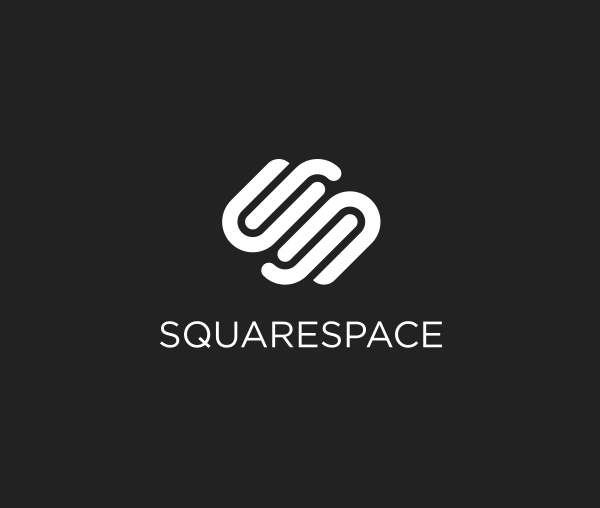CP+ photo show is happening in Japan and as I mentioned in last weeks podcast This is traditionally a time when the camera makers announce new P&S cameras and low end DSLRs- very consumer orientated products. And last night Canon did announce a new entry level DSLR, the Canon EOS T5 and a pretty serious P&S the GX1 Mark II - which is the sequel surprisingly to the GX1 ;)
Canon T5
[gallery ids="4348,4351,4353"]Pretty disappointed in this release and I don't see any reason you would pick this over the cheaper SL1.
- 18MP sensor - same that has been used for several years now.
- Digic 4 Processor- this will not be a speedy camera 3fps which is slightly slower than the SL1
- 1080p HD Video but not capable of continuous autofocus and bundled with 18-55 NON-STM confirms that. This older kit lens is OK but certainly not as good as the newer 18-55 STM Lens.
- 3" LCD But it is not articulating.
- Compatible with the little GPS-EP2 GPS is nifty addition but really I don't see a large market for budget DSLR paired with an expensive GPS logger.
The Canon T5 will be available in March for $549.00. The SL1 currently sells for $539.00Full Canon Marketing Blitz below. The Canon EOS SL1 offers the same quality with continuous AF and the STM lens that is improved at a slightly cheaper price.
Canon GX1 Mark II
[gallery ids="4350,4349,4347"]Slightly more interesting is the GX1 Mark II - A larger than average sensor size P&S with some nice features
- 12.8MP- 1.5" - this is almost the size of the sensor in the Canon Rebels and larger than the sensor in the micro 4/3 P&S cameras
- 5x Optical Zoom f/2.0 - f/3.9
- Optical Stabilization built in.
- WiFi and NFC for quick pairing with smartphones.
- 1080p Full HD Video with stereo sound
- Digic 6 Processor for snappy response and the handing the full HD files.
- 3.0" LCD Articulating - Remote shooting is also possible via the WiFi
The Canon GX1 has sold OK - it is a crowded marketplace in the space between traditional P&S and your DSLRS - we have lots of options with these smaller format cameras that are wrapped around larger sensors. This latest offering from Canon with the GX1 Mark II looks strong. The feature set is nice and the sensor should provide good low light capabilities all packaged into something that can almost fit in your pocket.The Canon GX1 Mark II will be available at the end of April for $799 - Preorder from AmazonFull Product Info
CANON T5
18.0 Megapixel CMOS (APS-C) SensorThe EOS Rebel T5 has an 18.0 Megapixel CMOS (Complementary Metal Oxide Semiconductor) sensor that captures images with exceptional clarity and tonal range, and offers more than enough resolution for big enlargements or crops - your photos can be printed and framed without having to worry about quality. This first-class sensor is APS-C sized for an effective 1.6x field of view (compared to 35mm format) and features many of the same new technologies as used by professional Canon cameras to maximize each pixel's light gathering, helping to ensure images are captured beautifully and brilliantly.DIGIC 4 Image ProcessorThe DIGIC 4 Image Processor on the EOS Rebel T5 dramatically speeds up camera operations, offering an intuitive shooting experience and providing images full of detail and natural color reproduction. It works in concert with the camera's 18.0 Megapixel CMOS sensor to achieve phenomenal levels of performance in virtually every situation, so you can shoot without having to worry about camera processes.EOS Full HD MovieThe EOS Rebel T5 offers easy-to-use video capture with breathtaking Full HD quality that is difficult for a smartphone to match. Capable of shooting in a number of recording sizes and frame rates, the EOS Rebel T5 offers outstanding video capturing performance, quality and simplicity -simply press the dedicated Live View/Movie Recording button to get started shooting. Additionally, the EOS Rebel T5 enables easy manual control of exposure, focus and Live View features and even allows for in-camera editing. And with a wealth of over 60 interchangeable lenses available to choose from, your video has plenty of creative options.Plus, with the Video Snapshot feature, the EOS Rebel T5 will capture short video clips (of 2, 4 or 8 seconds) then combine them automatically into one video file as a snapshot or highlights "album." With no editing needed after shooting, the compiled video is perfect for sharing online or displaying directly on an HDTV via the camera's HDMI port.Scene Intelligent Auto modeThe EOS Rebel T5 features Scene Intelligent Auto mode, which incorporates a number of Canon technologies to deliver the best possible exposure, simply. Joining Picture Style Auto, Automatic Lighting Optimizer, Automatic White Balance, Autofocus, and Automatic Exposure, Scene Intelligent Auto mode analyzes the image, accounting for faces, colors, brightness, moving objects, contrast, and whether the camera is handheld or on a tripod. It then chooses the exposure and enhancements that bring out the best in any scene or situation. Users without extensive photography knowledge or experience will not need to puzzle over settings; the Scene Intelligent Auto mode simplifies DSLR image capture so photographers can simply concentrate on composing images.Feature GuideTo help explain the specific function of features found on the EOS Rebel T5, the Feature Guide displays a simple description helpful in determining the applicability for the situation at hand. It is displayed in each shooting mode, during mode dial operations, and for Quick Control screen functions. It appears automatically when a function is selected - a lifesaver when trying to determine the best mode or function for the next picture. The feature guide works automatically by default, and can be disabled easily through the camera's menu.Up to 3.0 fps Continuous ShootingThe EOS Rebel T5 is a fast camera, capturing up to 3.0 fps (frames per second) for up to approximately 69 JPEGs or approximately 6 RAW files. Whether capturing the action on the soccer field or waiting for that perfect expression, the EOS Rebel T5 delivers intuitive, speedy operation for the best shot. With instant startup, speedy AF and virtually no shutter lag, the EOS Rebel T5 will help you capture the action, every time.Large 3.0-inch LCD MonitorThe EOS Rebel T5 has a huge, bright 3.0-inch LCD monitor that is ideal for composing and capturing amazing images, as well as showing them off to friends and family. The large display has high resolution with 460,000 pixels and a wide viewing angle of 170°. It's perfect for Live View composition or viewing camera settings like AF, ISO, Metering, AF Point selection and flash options.ISO 100-6400 (Expandable to H: 12800)With a broad range of light sensitivity ratings from ISO 100-6400 (expandable to H: 12800), the EOS Rebel T5 is ready to go no matter the light, capturing the finest detail with ease. Thanks to this expanded ISO range, the EOS Rebel T5 can capture more subjects in more situations, handheld, without the need for flash. This means more natural and detailed looking pictures and movies that can be shot discreetly, with ease.9-point AF System and AI Servo AFThe EOS Rebel T5 has exceptional autofocus with a 9-point AF system including a center cross-type AF point, delivering accurate focus whether the camera is oriented in portrait or landscape position. The system intelligently uses both normal and high-precision focus, depending on the aperture and available light, so your images are in crisp focus. An AI Servo AF system achieves and maintains consistent focus with an exceptional degree of reliability.Creative FiltersThe EOS Rebel T5 allows you to capture images with a new perspective without any need for extra accessories. The camera features five different, creative filters for still images: Grainy B/W, Soft Focus, Fisheye Effect, Miniature Effect and Toy Camera Effect. Each filter alters the mood and feel of any particular scene, allowing you to create photos with a fun, distinctive flair.Basic+ and Creative AutoThe EOS Rebel T5 is always ready to take beautiful pictures automatically. For photographers looking to experiment with more advanced settings, the EOS Rebel T5 is loaded with features to take you to the next level. Basic+ makes it easy to create the image effects you want, changing ambience or scene type according to simple choices made on the camera's Quick Control Screen. And ideal for beginners looking to expand their photographic horizons is Creative Auto mode where basic settings are based on full automatic operation, but shooting guides on the LCD screen explain how to make changes to exposure, tone, sharpness and more, and how those changes will affect the final image. In essence, with Creative Auto mode, you can experiment and learn more about photography while still taking stunning photographs.Compatible with the full line of Canon EF and EF-S lensesThe EOS Rebel T5 is compatible with all Canon lenses in the EF and EF-S lineup, ranging from ultra-wide angle to super telephoto lenses. Canon lenses employ advanced optical expertise and micron-precision engineering to deliver unprecedented performance in all facets of the photographic process. Numerous lenses feature Canon's sophisticated Optical Image Stabilizer technology to minimize the effect of camera shake. Through Canon lenses, photographers can truly maximize the quality and liberating performance of the EOS Rebel T5.Compatible with GPS Receiver GP-E2With the optional GPS Receiver GP-E2 attached to the hot shoe or the digital terminal, the EOS Rebel T5 can record location, including latitude, longitude and altitude, and has the ability to track the trajectory of movement with its logging function. An electric compass records the camera's orientation during each shot, and world time information is recorded through GPS syncing. With GPS information, you can always remember where and when your images were taken, perfect for tagging vacation photos or organizing albums.
Canon G1X Mark II
The Canon PowerShot G1 X Mark II raises performance and quality to new heights in a compact, brilliant design. Featuring a huge, 1.5-inch 12.8 Megapixel High-Sensitivity CMOS sensor, a powerful DIGIC 6 Image Processor and an all-new 5x wide-angle optical zoom lens with Optical Image Stabilizer and a circular, 9-blade aperture for stunning blurred backgrounds, the PowerShot G1 X Mark II delivers the outstanding image quality you would expect with a digital SLR camera but in a portable, Wi-Fi and NFC enabled package.It can capture 14-bit RAW plus JPEG images, features a staggering 31 focus points for speedy and accurate AF, a capacitive 3.0-inch tilt-type touch panel LCD and has newly developed Dual Control Rings on the lens barrel for fast control of exposure and focus. An optional high-resolution electronic viewfinder adds to the camera's professional feel and functionality. Whether being used as a companion to an EOS digital SLR or as a standalone camera, the PowerShot G1 X Mark II has the power to handle most any photographic situation it encounters.Canon 1.5-inch, 12.8 Megapixel High-Sensitivity CMOS Sensor Almost as large as the APS-C CMOS sensor found in many EOS digital SLRs, and bigger than those found in 4/3 system cameras, the PowerShot G1 X Mark II's sensor sets the standard for sensitivity and resolving power in compact cameras. Each cell area is 4.5x the size of those found in 1/1.7 type sensors and is thus able to capture more light at the pixel level. This means better detail, even at higher ISOs, with minimal noise and distortion and, thanks to the sensor's wide cell pitch, breathtaking dynamic range. The PowerShot G1 X Mark II camera natively captures images in the 3:2 aspect ratio, which is the same as Canon EOS SLR cameras. The PowerShot G1 X Mark II also features a new Aspect Ratio function, enabling RAW image capturein both 3:2 and 4:3 aspect ratios while maintaining the same angle of view.Canon DIGIC 6 Image Processor The PowerShot G1 X Mark II camera is equipped with the very latest Canon proprietary processor, the DIGIC 6 Image Processor, which makes several important advancements to image quality both in stills and video. Improved light sensitivity allows for higher resolution with less noise when shooting in dark conditions, and Dynamic IS now detects and compensates for tilt and parallel movement (shift blur) to create video that's exceptionally free of distortion. The DIGIC 6 Image Processor also enhances the performance capabilities of the PowerShot G1 X Mark II, powering full resolution high-speed continuous still shooting and the advanced Star shooting modes. Video recording has also been improved with MP4 recording for better compatibility with mobile devices and tablets. Highly compressed MP4 video not only preserves space on your memory card but also improves playback on mobile devices. Plus, with MF Peaking possible thanks to the new processor, you'll have a pro-level focusing tool at your disposal.Canon HS SYSTEM The Canon HS SYSTEM lets you take bright, clear photos in an even wider range of shooting situations. Beautiful low-light shots are possible with minimal noise and maximum detail in highlight and shadow areas. The system is the result of two technologies in the PowerShot G1 X Mark II: the amazing 1.5-inch High-Sensitivity CMOS imaging sensor, which is able to capture more light; and the DIGIC 6 Image Processor, which actively reduces noise at high ISO speeds and processes images at high speed, even at full resolution. Thus, the Canon HS SYSTEM allows you to use higher shutter speeds to capture clearer images with reduced noise and blur in more situations.5x Optical Zoom plus a new f/2.0 - f/3.9, 24mm Wide-Angle lens with Optical Image Stabilizer Developed specifically for the PowerShot G1 X Mark II, this large aperture lens offers the highest specifications for any camera in this class, and incorporates dramatic improvements on all fronts based upon the feedback of PowerShot G1 X users. It offers a 5x zoom factor with a 24-120mm equivalent range that's perfect for any number of shooting scenarios, and it has an incredibly bright aperture value of f/2.0 at wide angle and f/3.9 fully zoomed. It has a newly designed inner focusing system which enables fast AF speed with minimal lens movement, a reduced focusing distance of 5cm, features 14 elements in 11 groups and has a 9-blade aperture diaphragm for beautiful background blur. Engineered to perform and deliver gorgeous images every time, it's the perfect lens for the PowerShot G1 X Mark II camera's amazing sensor. And, in response to the overwhelming requests from PowerShot G1 X users, it has an integral lens cap.Optical Image Stabilizer Handheld shooting can often lead to camera shake, making photos and videos blurry. Canon's Optical Image Stabilizer is a sophisticated system that uses lens-shift technology to correct for unwanted camera movement. It makes handheld photography more practical in more shooting situations, providing excellent image quality in many difficult situations: outdoors at dusk, inside without a flash, and even at the telephoto end of the zoom range without a tripod. For still photos, it enables shooting at slower shutter speeds, accommodating more low-light shooting situations than ever before without having to boost ISO sensitivity. With camera shake and vibration reduced, you get a sharper, steadier image. And because it is an optical system, there is none of the image degradation typical with electronic image stabilizers.Built-in Wi-Fi The PowerShot G1 X Mark II is equipped with built-in Wi-Fi® technology for convenient sharing and transferring of your still images and video. Easily post your images to social networking and media sites - Facebook, Twitter, YouTube, Flickr and now Google Drive - through CANON iMAGE GA TEWAY# directly from your PowerShot camera, or save them to the online photo album to share anytime, anywhere. The camera can also connect directly to both iOS® and Android devices, and upload images via the free Canon CameraWindow app without a computer. You can control the destination of your uploads to share with everyone or to selected groups, and even add comments. Sharing video is also easy with the PowerShot G1 X Mark II, which records video using the MP4 format with minimal file size. Enhanced Wi-Fi makes posting in real time possible, so you can keep everyone up to date with amazing photos and video even as events unfold. The built-in Wi-Fi technology on the PowerShot G1 X Mark II also allows you to transfer images to other Wi-Fi equipped PowerShot cameras or print your photos directly to a PictBridge (Wireless LAN) certified printer.One-touch connection to your mobile device or computer is also made possible on the PowerShot G1 X Mark II with the camera's dedicated Mobile Device Connect Button. You can choose to transfer images to your smartphone or tablet for immediate sharing with the CameraWindow app**, or to your computer on the same network with Image Sync to make saving and organizing your images easier. When the camera finds a linked computer on the same wireless network, images are sent directly to it. Otherwise, images are temporarily stored on CANON iMAGE GATEWAY# then transferred once a connection is made, eliminating the need for cables.Remote Shooting With the built-in Wi-Fi® on the PowerShot G1 X Mark II, you can use your smartphone or tablet to remotely control the camera. Simply connect wirelessly to your device and access the free Canon CameraWindow app. Your device will show a live image of the camera's capture for easy composition - perfect for wildlife and nighttime shots, group photos and all kinds of situations. The camera's versatile zoom, flash, self-timer and shutter are all under your control, with images being saved to your camera as usual.Built-in NFC (Near Field Communication) The PowerShot G1 X Mark II camera supports NFC (Near Field Communication) technology, eliminating the need to find and open the Canon CameraWindow app* on your mobile device. Simply touch the NFC icon on your camera to your compatible Android device**, and the CameraWindow app will launch automatically for remote shooting and quick, easy sharing of your images. Built-in NFC technology also makes it simpler to install the app. If the app hasn't been installed yet, once you touch the devices together for the first time, the download screen will display automatically.Canon Full HD Video Advantage Preserving your important memories and creative film clips in stunning quality is easy with Full HD recording on the PowerShot G1 X Mark II camera and its dedicated movie button. With the camera's advanced DIGIC 6 Image Processor, the camera records Full HD video in MP4 that is breathtaking even when played back on a large-screen HDTV via the camera's HDMI output. Video is recorded at 30 frames per second* with stereo sound and because clips are recorded in MP4, you can fit more on a single memory card. The smaller file size also makes it easier to download to a computer and share with family and friends.

 With the Nikon D5600 now available for the US and Canon T7i available for pre-order it's that time again for a bit of a comparison. At one point, Nikon had put on a good showing with the D5300 leading the market for photography while our video recommendation had been going to the Canon T5i. Since then Nikon camera's have been stagnating under minor updates while the T7i got a decent upgrade in processing, sensor, connectivity, and focus certainly pushing it closer to the top of our list.
With the Nikon D5600 now available for the US and Canon T7i available for pre-order it's that time again for a bit of a comparison. At one point, Nikon had put on a good showing with the D5300 leading the market for photography while our video recommendation had been going to the Canon T5i. Since then Nikon camera's have been stagnating under minor updates while the T7i got a decent upgrade in processing, sensor, connectivity, and focus certainly pushing it closer to the top of our list.









 A new year and new Canons to match with the newly announced Canon T7i (800D) and 77D (9000D). Odd's are you're wondering a bit where the 77D fits in, both Toby and I have been asked a lot this week. On paper, it's a replacement to the T6S as a bridge camera between the entry level T7i and 80D. While making the product line and obscure Canon naming just slightly harder it makes things a bit more drawn out with the bare bones budget T6, the new entry level T7i for beginners, the 77D making a step up with video, then going to the 80D as a truly semi-pro platform.
A new year and new Canons to match with the newly announced Canon T7i (800D) and 77D (9000D). Odd's are you're wondering a bit where the 77D fits in, both Toby and I have been asked a lot this week. On paper, it's a replacement to the T6S as a bridge camera between the entry level T7i and 80D. While making the product line and obscure Canon naming just slightly harder it makes things a bit more drawn out with the bare bones budget T6, the new entry level T7i for beginners, the 77D making a step up with video, then going to the 80D as a truly semi-pro platform.







 When Nikon announced their next entry level DSLR in November the Nikon D5600 was dropped with its specs but no details on price or when it was coming to the US. This week at CES they announced it’s coming soon, this month in fact. Coming in multiple kits, the Nikon D5600 will be released this month with the AF-P 18-55mm F3.5-5.6G lens for $799, with the AF-S 18-140mm f/3.5-5.6G lens for $1199, with the 18-55 and AF-P 70-300mm F4.5-6.3G lenses for $1149, and body only for $699. Actually $100 less than the D5500 when it was announced last year.
When Nikon announced their next entry level DSLR in November the Nikon D5600 was dropped with its specs but no details on price or when it was coming to the US. This week at CES they announced it’s coming soon, this month in fact. Coming in multiple kits, the Nikon D5600 will be released this month with the AF-P 18-55mm F3.5-5.6G lens for $799, with the AF-S 18-140mm f/3.5-5.6G lens for $1199, with the 18-55 and AF-P 70-300mm F4.5-6.3G lenses for $1149, and body only for $699. Actually $100 less than the D5500 when it was announced last year.







 The Yi M1 uses the 20.16MP Sony IMX269, actually the same sensor in the Olympus Pen-F giving it 4K (30fps), fast continuous shooting, and RAW image capability. This allows it a speed of five frames per second and a 81 point focus system which is good for a entry level camera. As for RAW it saves in Adobe DNG making it work perfectly with Lightroom. Bluetooth and Wifi are included for fast mobile sharing and remote control of the camera.
The Yi M1 uses the 20.16MP Sony IMX269, actually the same sensor in the Olympus Pen-F giving it 4K (30fps), fast continuous shooting, and RAW image capability. This allows it a speed of five frames per second and a 81 point focus system which is good for a entry level camera. As for RAW it saves in Adobe DNG making it work perfectly with Lightroom. Bluetooth and Wifi are included for fast mobile sharing and remote control of the camera. 


















 Both D5500 and D5300 offer:
Both D5500 and D5300 offer:


 A
A  Pre-order Canon EF-S 10-18 f/4.5-5.6 IS STM $299:
Pre-order Canon EF-S 10-18 f/4.5-5.6 IS STM $299:  Similar to the release of the f/4 IS version of the 24-70, we now have a f/4 IS version of the 16-35 f/2.8 lens. Taking a look at the MTF charts and on paper this looks to be a sharp lens and a more affordable wide angle option for full frame photographers. The f/4 version will sell for $1199 and the f/2.8 non IS version sells for $1699.A bit more about the Intelligent IS in this lens
Similar to the release of the f/4 IS version of the 24-70, we now have a f/4 IS version of the 16-35 f/2.8 lens. Taking a look at the MTF charts and on paper this looks to be a sharp lens and a more affordable wide angle option for full frame photographers. The f/4 version will sell for $1199 and the f/2.8 non IS version sells for $1699.A bit more about the Intelligent IS in this lens
 Yawn - I have a
Yawn - I have a 



